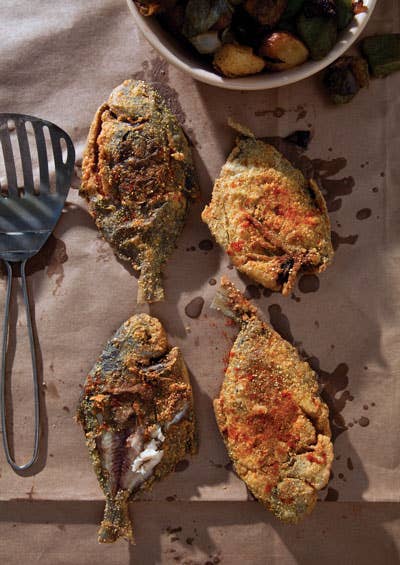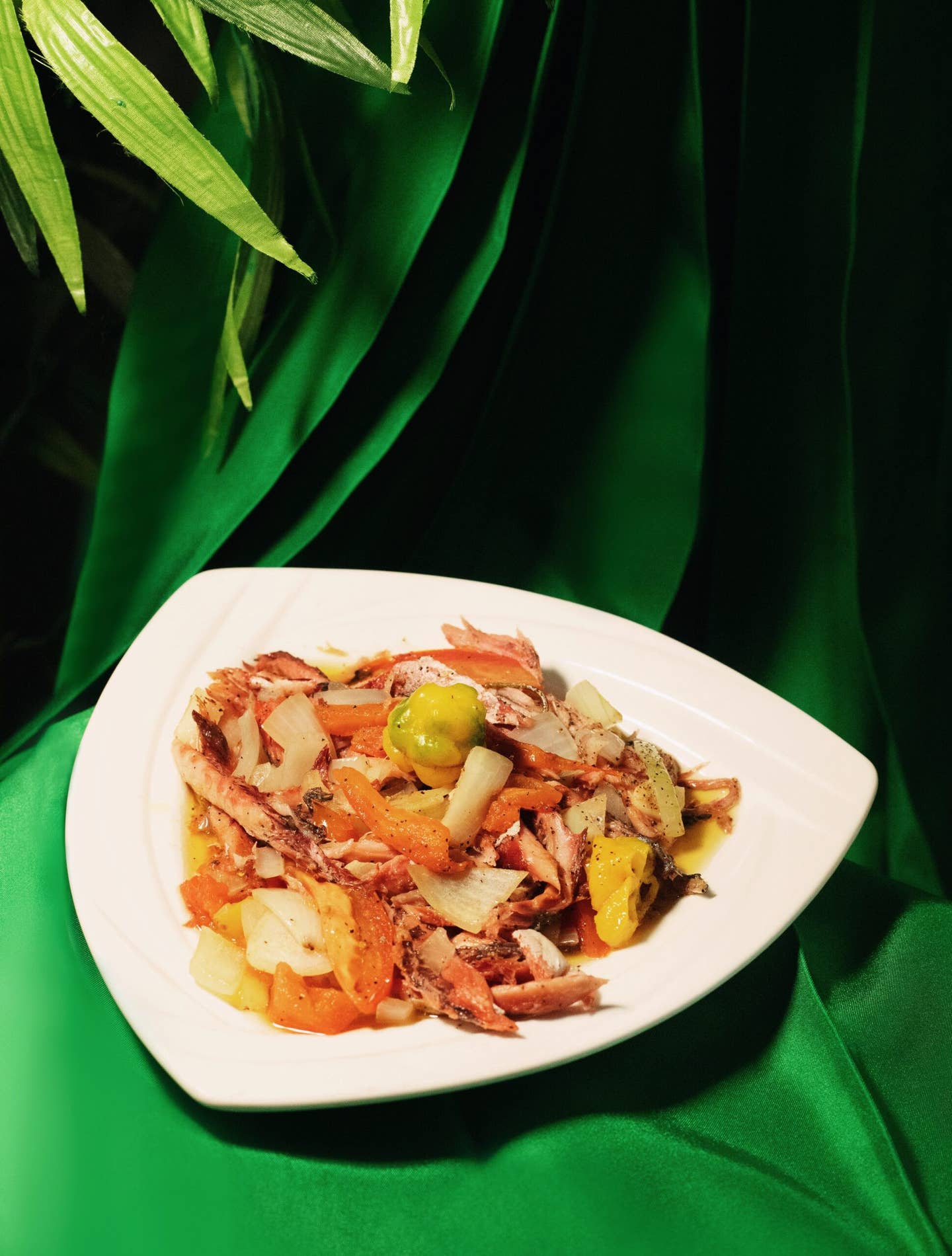
From Louisiana to LA
For African-American transplants to LA, fish fries were the glue that held them together.
I grew up in Pasadena in the 1970s, in a house my grandfather built. Saturday mornings for me and other African-American kids meant Soul Train, sponsored by Afro Sheen and Ultra Sheen cosmetics. My parents were the hippest parents I knew. Dad had a fluffy 'fro, and I remember him wearing a certain white one-piece jumpsuit with platform shoes and a man purse. My mother was, quite simply, gorgeous. She worked at the Santa Anita Park racetrack, where she was a hostess; her job was to look cute, dress up in white boots and a miniskirt, give tours, and hobnob with celebrities like Sammy Davis, Jr. She liked her job. Can you blame her?
My parents had a rocky marriage, but they were able to ride the wave of opportunity of the post-civil rights era, acquiring a home with a pool, a Mercedes, and scholarships to an all-girls school for my sister and me. My paternal grandfather Liney Hamilton, a k a Dobbie, had come to LA from New Orleans in the 1930s with my grandmother, whom we called Dear. They, along with large numbers of other New Orleans Creoles, came West to escape segregation and to find jobs, a migration sometimes called "from La. to LA." After a couple of years of renting, my grandfather settled in Pasadena on the northwest side, the black side, a stone's throw from the Rose Bowl stadium.
One of the things folks from Louisiana brought with them to Los Angeles was a love for seafood. Shrimp and oysters survived the journey; crawfish, not so much. There were also traditional Creole dishes like gumbo and red beans and rice, along with the Southern standards: collard greens, corn bread, sweet potato pie. And there was fried fish.
My great-grandmother on my mother's side, Minnie Mullen—we called her Mother Dear—was a fishing fanatic. She was in her late 60s, but she had a boyfriend, a man we knew only as Ollie. To the best of my knowledge, the entirety of their relationship consisted of fishing. Toting their aluminum beach chairs and a tackle box, she and Ollie would leave early in the morning in his dented pickup truck to head out to Lake Puddingstone in San Dimas, 30 miles east of LA. Lake Puddingstone was stocked with bluegill, a small, flat sunfish with delicious, delicate-tasting white meat. I remember Ollie and Mother Dear returning with coolers filled with the day's catch, which they dumped in our driveway, ice and all. One or two fish would still be clinging to life, gasping, eyes glazed. It was the first time I'd seen something that would become food die. As soon as the fish arrived, Mom hit the phones, inviting folks to come over for a fish fry.
My mother wasn't one to do much cooking. It cramped her style. But when we were putting on a fish fry, she was all in and got the family assembly line prepared. I helped Dobbie clean the fish. We never cut off the heads; we just used a little knife to scale and gut the fish. My next job was to shake a few fish at a time in a paper bag containing cornmeal, flour, and Lawry's Seasoned Salt. Then I'd pass each fish by its tail to Mom, who dropped it in the oil, which was flavored with a big spoonful of bacon grease from the coffee can we kept on the stove. The grease added a smoky taste to the crust. Once the fish were crisp, they were plucked from the skillet and laid out on brown paper grocery bags to drain. Potatoes fried with onions and bell peppers were the side dish. Tartar sauce mixed with Tabasco added tang and spice.
Fish fries were casual, a mingling of family and close friends. There was my mom's friend Jimmie, a jockey at the track who had just bought his own horse; there was Vannie of the well-respected Valentines, who owned the local mortuary; there were the strivers, Carol and Ken Ellison, the first local black owners of a McDonald's franchise; and there was Daddy Howard, my mother's stepfather, who owned a prizefighting gym downtown.
With the end of the '70s came the collapse of my parents' marriage, and after that our family didn't have the organizational wherewithal to pull off a fish fry. We also came to learn about things like saturated fats, and that can of bacon grease—a vestige from the South and poverty and the plantation—disappeared from the stovetop. But while it was there, it made that fish taste real good. (See Creole-Style Fried Fish.) —Lonnee Hamilton, a freelance writer and editor who lives in Los Angeles
Keep Reading
Continue to Next Story










